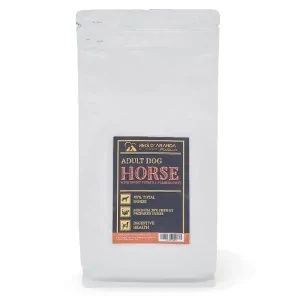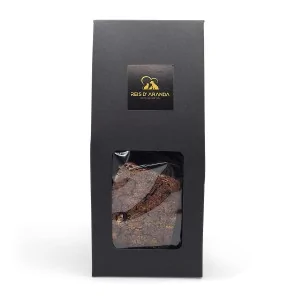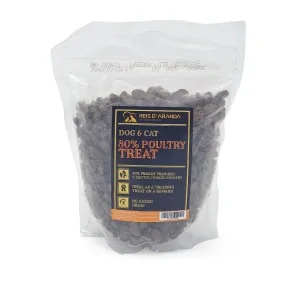The Tornjak originated from genetically homogeneous, almost extinct, indigenous shepherd dogs. These dogs have...
THE FILA DE SAN MIGUEL
INTRODUCTION
The Cão de Fila de São Miguel is a breed of cattle dog native to Portugal, specifically the Azores.
The breed was developed on the island of São Miguel since at least the 16th century. A herding dog with a difficult character, its hardiness makes it a good example of a guard dog.
THE ORIGIN OF THE FILA DE SAN MIGUEL
The Fila de São Miguel is a breed documented at the beginning of the 19th century on the island of São Miguel, Archipelago of the Azores. It comes from the Portuguese shepherd dogs such as the Perro de Castro Laboreiro, the Spanish Mastiff or the Serra da Estrela dog, which arrived in the Azores from the 16th century onwards. In San Miguel these dogs were used for cattle breeding and were called ‘perro vaca’ (cow dog). Their history is linked to that of the now extinct Terceira dog. Its first standard was drawn up in 1984 and was recognised internationally in 1995 by the FCI. Today it is mainly used as a pet and is gaining popularity in mainland Portugal.
WHAT IS THE FILA DE SAN MIGUEL LIKE?
GENERAL APPEARANCE: Robust and rustic.
IMPORTANT PROPORTION: Slightly longer than tall.
HEAD: Strong, with longitudinal axes of skull and muzzle parallel.
CRANIAL REGION:
SKULL: Broad, square in shape. Slightly convex on top, occipital protuberance not very apparent.
STOP: Pronounced.
FACIAL REGION:
TRUFA: Broad, black in colour.
HOCIO: Nasal bridge straight, slightly shorter in length than the skull. Slightly rounded side faces.
LIPS: Well pigmented, overlapping and firm. Lower profile slightly rounded.
TANDIBLES: Very powerful and well developed, fitting well. Mouth well wide.
TEETH: Complete dentition with scissor or pincer bite.
EYES: Oval in shape, expressive, set slightly sunken and horizontal, of medium size. Dark brown in colour.
EARS: Set on above eye level; when not amputated, medium sized, triangular and drooping without touching the cheeks.
In countries where amputation is not forbidden, they are cropped with rounded tips.
NECK: Straight, strong and of medium length. Set well into the shoulders. No dewlap.
BODY: Strong, well muscled with broad forechest.
CHEST: Broad and well let down.
BACK: Straight.
LOIN: Of medium length, broad and well muscled.
Croup: Of medium length in relation to the body, slightly higher than the withers.
BOTTOM LINE: The lower profile is upward, belly and flanks well proportioned in relation to the body.
TAIL: Set on high, thick, of medium length and slightly curved. Docked at the 2nd or 3rd vertebra in countries where tail docking is not forbidden.
LIMBS
FOREQUARTERS: Strong, set reasonably wide apart and straight.
Shoulders: Angle of shoulder blade slightly open.
Upper arm: Strong, of medium length and well muscled.
FOREARM: Thick and well muscled.
BODY: Strong.
Pastern: Strong, of medium length.
HANDS: Oval in shape, with strong fingers and nails.
HINDQUARTERS: Strong and reasonably wide apart.
Upper thighs: Long, muscular, open hip-femoral angle.
LEGS: Muscular and of medium length.
METATARS: Of medium length. May have dewclaws.
FEET: Oval in shape, with strong toes, not too arched. Strong nails.
GAIT / MOVEMENT: Free and loose. In its movement, the dog shows a slight swaying of the hindquarters.
SKIN: Thick and pigmented.
HAIR: Short, smooth, dense, of harsh texture. There is some fringing on the tail, in the anal region and on the hindquarters.
COLOUR: Beige, light charcoal beige, grey, ranging from light to dark shades; always fawn; a white mark on the forehead and from the chin to the chest is permissible; may have small white markings on the front, hind feet or on all four feet.
SIZE AND WEIGHT
HEIGHT AT WITHERS:
- MALES: 50-60 cm
- FEMALES: 48-58 cm.
WEIGHT:
- MALES: 25-35 kg,
- FEMALES: 20-30 kg.
FAULTS: Any departure from the foregoing points should be considered a fault and the seriousness with which the fault should be regarded should be in exact proportion to its degree and its effect upon the health and welfare of the dog.
SEVERE FAULTS:
- HEAD: Axes of skull and muzzle converging.
- Mandibles: Slightly undershot or undershot upper or lower jaw.
ELIMINATING FAULTS:
- Aggressive or overly fearful dog.
- Divergent axes of skull and muzzle.
- Severe overshot or undershot mouth.
Any dog showing clear signs of physical or behavioural abnormalities should be disqualified.
NOTE:
Male dogs should have two apparently normal appearing testicles fully descended into the scrotum.
HEALTH OF THE FILA DE SAN MIGUEL
This breed of dog is strong and hardy and therefore generally enjoys good health. However, it may be predisposed to common dog diseases such as hip dysplasia or volvulus-gastric dilatation.
THE PERSONALITY OF THE FILA DE SAN MIGUEL
The Fila de San Miguel has traditionally been used for herding cattle and for guarding and protecting cattle from strangers. It is also a great watchdog. Due to its characteristics it requires a certain amount of activity and needs exercise, walks, occupation and play. They are suited to rural environments and large spaces and less suited to urban environments to which they adapt with difficulty. At work they are determined, brave, territorial and efficient with cows, which they drive by biting them on the paws. In the family they are obedient, intelligent, faithful, lively and affectionate. On the other hand, they are distrustful of strangers and territorial with other dogs with whom they can behave in a dominant manner. Because of their characteristics they need an expert hand and careful training and socialisation at an early age; with firmness, positive reinforcement and affection they can become a reliable and tame companion. Once he learns a command he does not forget it. Finally, if he gets bored or remains inactive or alone for long periods of time, he can become very destructive, compulsive, nervous and aggressive.
CONCLUSION
Coming from so far across the Atlantic, it should come as no surprise that this Portuguese breed is so rare. The hardy fila de São Miguel is a robust and intelligent shepherd that is highly sought after by breeders in its native land because of its physical attributes, which allow it to work hard in all types of weather.
These spectacular herders are also well suited to protect property and defend people. They are very resolute with strangers, but docile with their owner. They are very intelligent and responsive; when herding dairy cows, they bite on the underside, to avoid damaging the udders.
Leave a comment
Log in to post comments
















